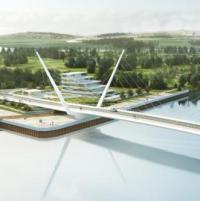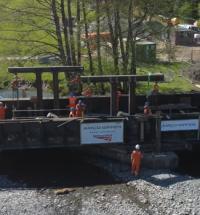A US$357,000 scanning project started in 2014 and has now amassed many billions of dimensionally accurate points on the structures of the Forth Bridge, Forth Road Bridge and the under-construction Queensferry Crossing.
Now, a further grant of US$506,000 from Transport Scotland has enabled work to begin on learning games, augmented reality apps, real-time interactive models for virtual headset tours and video fly-throughs for release in 2018. All are aimed at developing science, technology, engineering and maths skills among pupils in Scottish schools.
Transport minister Humza Yousaf said: “The Forth Bridges represent Scotland’s industrial past, creative present and our dynamic and innovative future. They are the pinnacle of world-leading design and engineering and it’s right that we conserve and protect them and also seek to inspire and educate the young engineers of the future.”
Transport Scotland funded the project on behalf of the Forth Bridges Forum and the laser scanning and digital development work has been carried out by the Centre for Digital Documentation & Visualisation (CDDV), a partnership between The Glasgow School of Art’s School of Simulation & Visualisation and Historic Environment Scotland.
The laser scanning work began in May 2015 and involved a total of 90 days digitally documenting the bridges on foot, from ropes, vehicles and boats. Mobile mapping was undertaken in partnership with Leica Geosystems UK.

Alastair Rawlinson, head of data acquisition at The Glasgow School of Art and CDDV said: “Laser scanning each of the three bridges has posed unique challenges for our team. We have had to use our combined experience, gained through digitally documenting globally iconic structures such as the Sydney Opera House and Mount Rushmore to create innovative methodologies to allow us to capture these incredible bridges in great detail.
“We will now use this specialised 3D dataset to develop interactive learning resources based on advanced gaming technologies and virtual reality to make the information accessible to school children across Scotland and beyond.”
Miles Oglethorpe, head of the industrial heritage team at Historic Environment Scotland - which was responsible for preparing the successful World Heritage nomination of the Forth Bridge - said: “Having such an extraordinary, detailed and accurate 3D record of The Forth Bridge is a tremendous advantage for us as we set about sharing Scotland’s sixth World Heritage Site with the world.”
A panel including school teachers, Napier University and the Institution of Civil Engineers, is helping CDDV develop options for the data.




